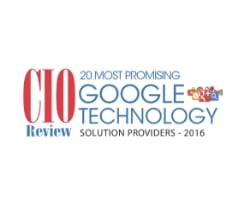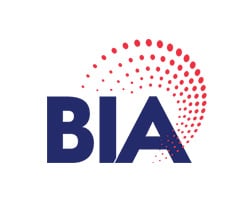When it comes to scaling your business, many factors play a role in driving growth, but few are as crucial as branding. A strong brand is more than just a logo or slogan—it serves as the foundation for how your business is perceived by customers, investors, and competitors. In an era where consumer trust is declining, effective branding is vital for building trust, nurturing loyalty, and setting your company up for sustained success. Below, we explore why branding is a key driver for scaling your business and how it can impact your growth trajectory.
1. Understanding the Role of Branding in Business Growth
Defining branding and its key components
Branding encompasses a range of elements, including your company’s name, logo, design, voice, and overall identity. It’s how your business communicates its values, mission, and unique selling proposition to the world. According to a study, consistent branding can increase revenue by up to 23%. Effective branding ensures that your company’s messaging is consistent and recognizable across all platforms, establishing a cohesive image in the minds of your target audience.
How branding influences business perception and reputation
First impressions are critical in business. A well-established brand sets the tone for how customers and stakeholders perceive your company. According to a Nielsen report, 59% of consumers prefer to buy from brands they are familiar with. Strong branding helps build a positive reputation, making it easier to attract new customers and enter new markets as you scale.
The connection between strong branding and market expansion
As your business grows, entering new markets becomes a priority. Expanding into new regions or sectors requires more than just logistics—it demands a brand that resonates with broader audiences. A recognizable and respected brand can open doors to new opportunities by creating a sense of familiarity and trust, allowing your business to scale more seamlessly.
2. Building Brand Equity for Long-Term Success
What is brand equity and why it matters for scaling
Brand equity refers to the value a brand holds in the eyes of consumers. It’s built through consistent delivery of a positive customer experience, high-quality products, and strong marketing efforts. Businesses with high brand equity enjoy a competitive edge. For instance, Interbrand’s report shows that Apple’s brand alone is worth $482 billion, demonstrating how strong brand equity translates into tangible value.
Steps to create and maintain strong brand equity
Building brand equity starts with creating a strong brand identity and consistently delivering on your brand promise. From ensuring high product quality to engaging with customers on a personal level, every interaction helps shape your brand’s value. Consistency in branding leads to better customer recognition, with 81% of consumers needing to trust a brand to buy from it.
The impact of brand equity on customer loyalty and revenue growth
Brand equity directly impacts customer loyalty. Studies show that retaining existing customers is 5 to 25 times cheaper than acquiring new ones, making loyalty crucial for sustainable growth. Moreover, strong brand equity makes it easier to introduce new products or services, as customers are more likely to embrace offerings from a brand they already trust.
3. Establishing a Clear Brand Identity to Differentiate from Competitors
Creating a unique brand identity that stands out in the market
As the market becomes more crowded, standing out is no easy task. A well-defined brand identity is key to differentiating yourself from competitors. Brands that clearly communicate their identity have been shown to outperform the market by 3.5 times. This includes your visual identity (logo, colors, and design), your brand voice (the tone in which you communicate), and your core messaging (what makes you unique).
The importance of differentiation in a crowded marketplace
Differentiation is not just about being different—it’s about being memorable and relevant to your target audience. With so many businesses offering similar products or services, a strong brand identity ensures that your company is not lost in the noise. Research shows that brands with a strong identity saw a 33% rise in customer loyalty.
Case studies of successful brand identity transformations
Brands such as Nike and Apple have both undergone significant branding transformations. Nike’s “Just Do It” campaign changed how consumers viewed athletic gear, turning it into a lifestyle brand and creating a loyal fan base. Apple, known for its minimalist design and innovative products, shifted from being just another tech company to a premium brand. These companies succeeded by creating distinct brand identities that resonated with their audiences, allowing them to scale significantly. Nike’s sales rose from $877 million to $9.2 billion from 1988 to 1998.
Triofox is a prime example of a brand identity transformation. With the help of Millenium Agency, a brand strategy was developed for collateral materials that enhanced TrioFox’s overall brand. Well-designed data sheets, case studies, sell sheets, and PowerPoint presentations for sales staff, among other collateral materials, contributed to an improved sales cycle, resulting in increased brand recognition. This led to accelerated sales opportunities, increased customer loyalty, and engaging content that kept customers coming back.
4. The Power of Brand Consistency in Scaling Operations
How consistent branding builds trust with customers
Consistency is key to building trust. A Harvard Business Review study found that businesses with consistent brand presentation are 3 to 4 times more likely to experience visibility. Whether it’s through social media, website content, or in-store experiences, customers expect the same level of quality and message every time they interact with your brand. This reliability is essential as you scale.
Ensuring brand consistency across multiple platforms and locations
As businesses grow, maintaining brand consistency across multiple locations, platforms, and teams can be challenging. From your website to social media channels, print materials to in-store branding, ensuring that your message and visual identity remain consistent is vital. Consistency fosters customer trust, and Forrester Research notes that 95% of executives believe delivering consistent brand experiences is crucial for revenue growth.
Examples of brands that scaled successfully through consistency
Global brands like Starbucks and McDonald’s are perfect examples of how consistency fuels growth.
In 2024, Starbucks will continue to experience solid growth despite some challenges. For the first quarter of 2024, the company saw an 8% increase in revenue, reaching a record $9.4 billion. This growth was largely driven by a 5% increase in global comparable store sales, boosted by 7% growth in international markets. Starbucks also reported significant growth in its rewards program, with 34.3 million active U.S. members, a 13% increase year-over-year.
By the third quarter of 2024, Starbucks’ trailing twelve-month revenue stood at $36.48 billion, reflecting a year-over-year increase of 4.17%.
For McDonald’s, consistency in branding and strategy has been a key driver of its growth in 2024. The company continued its success through its “Accelerating the Arches” strategy, which focuses on delivering value, innovation, and a unified brand experience across locations worldwide. In the first half of 2024, McDonald’s reported 6.46% year-over-year revenue growth, bringing its total revenue to $25.76 billion.
McDonald’s loyalty program contributed significantly, with systemwide sales from loyalty members reaching $26 billion over the past twelve months, showing the importance of brand consistency in driving customer engagement and growth.
Both companies have maintained a recognizable brand identity while expanding to thousands of locations worldwide. From their logos to customer service standards, everything remains consistent, creating a familiar experience for customers no matter where they are. This consistency has been a key driver in their ability to scale successfully.
Conclusion
When scaling your business, branding plays an integral role in setting the stage for growth. It builds trust, fosters customer loyalty, and positions your business for long-term success. By focusing on creating a strong brand identity, building brand equity, and maintaining consistency, you can differentiate your company from competitors and ensure your brand scales alongside your business. Don’t leave your growth to chance—invest in branding as a critical component of your business strategy.
Millennium Agency is a nationally acclaimed, woman-led B2B branding, website design, and public relations firm dedicated to creating emotionally impactful brands that shape your customers’ buying decisions and give you a competitive advantage. As your trusted industry partner, we use our proprietary Brand180 framework to deliver powerful results and accelerate your brand’s growth. While you concentrate on running your business, our team will craft your ideal brand and generate leads to fuel your success. For more information, visit www.mill.agency


























